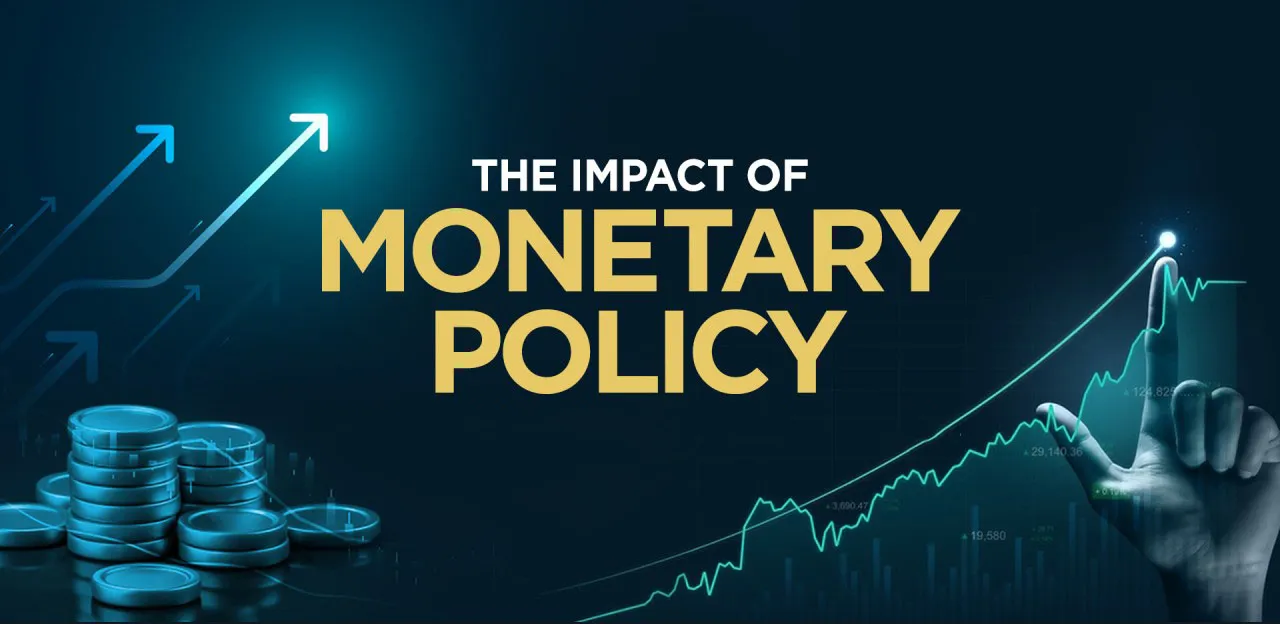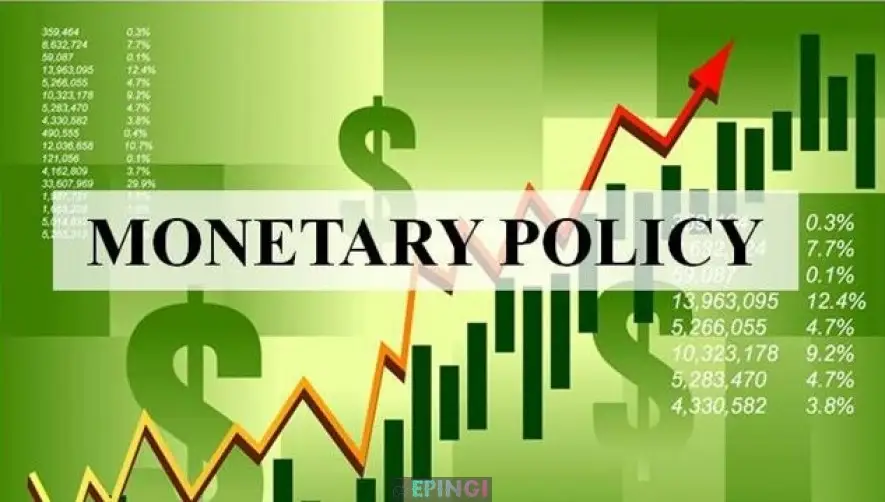Monetary policy impact shapes our everyday life more than we often see. It’s not just about money in your pocket, but the jobs out there and the price of your bread and milk. As an expert watching these trends, I’ve seen how a central bank’s moves can sway entire economies. Think of it as a captain steering a massive ship. One wrong turn and everything tips. Now, let’s dive into how these choices affect your life, right from the job you hold to the cash you spend. Ready to see the real power of the purse? Let’s unpack the story of money, policy, and the dance they do.
Understanding the Mechanisms of Monetary Policy
The Role of Interest Rates and Inflation Targets
Let’s dive into how central banks keep the money world in check. They have a big tool, interest rates, to speed up or slow down how fast we spend. Imagine you have a piggy bank. If the bank pays you more to save, you might hold on to your money a bit tighter. But if it doesn’t pay much, why save? Let’s go buy something instead! That’s interest rates at work.
The central bank sets a goal for prices so they don’t jump too high too fast. This is their inflation target. If prices zoom up too fast, your cash can buy less. That’s a bummer when you want that new toy. The bank tweaks interest rates to keep inflation, or the general rise in prices, just right. So we can all plan for how much things will cost.
Quantitative Easing: Purpose and Pitfalls
Now, what if interest rates are super low, but no one’s spending? Then the bank tries something called quantitative easing. It sounds fancy, but think of it like the bank using a big vacuum to suck up loans to make it easier for other banks to lend money. But watch out – this can make too much money float around, and that can lead to bumps in prices later on.
The bank buys stuff like government bonds. This is serious because it pumps money into the economy. These bonds usually have a safe return. Banks now have more cash. They can lend to people or businesses. This can help get the money wheels turning.
The catch? If we push this button too much, too much money might chase too few goods. This brings back our old problem – too much inflation. Prices might start to race up, and no one likes paying four bucks for a candy bar that used to cost one.
Quantitative easing should be used with care. We don’t want too much money making the economy hot, but we also don’t want people losing their jobs because no one’s spending. It’s like being Goldilocks, finding what’s just right.
So, when you hear about interest rate changes or the big Q.E., you’re really hearing about how the central bank is trying to keep our money world steady. It’s a tough job, but by changing rates and buying up bonds, they’re looking out for the economy’s health. They want businesses to bloom and your piggy bank to feel just right. And when it works? It’s like hitting the perfect jump on your bike – it feels awesome.
Evaluating Central Bank Decisions and Market Responses
Assessing the Impact of Discount Rates and Open Market Operations
When central banks change discount rates, it’s like setting sail in new winds. These rates guide how much banks pay to borrow money from each other. Lower rates mean cheaper loans, which leads to more money in the system and often, more spending. If rates go up, borrowing costs rise, and spending can slow down. This is one key way central banks control how much cash flows in the economy.
Open market operations are another tool. Imagine the central bank as a huge money ship. This ship can buy government bonds to add money to the markets or sell them to take money out. It’s a big deal for controlling cash flow and keeping our economy stable.
Consumer Behavior and Fiscal Policy Interactions
Let’s talk about how you and I, as buyers, and the government, react to these central bank moves. When interest rates dip, we feel freer to spend. A new car or house looks more doable. The government can also step in with spending plans to give the economy a boost. Think of this as a push from the government to up the winds in our sails.
But if rates climb, we might hold back and save more. We might not eat out as much or delay big buys. Our spending changes can hit shops and companies hard. So, central banks must be careful, like captains steering through stormy seas. They aim to keep jobs stable and the economy growing without prices flying too high or dipping too low.
In this dance between central bank choices and how we all spend, there’s a rhythm to keeping the economy humming along just right. It affects everything from the cash in our pockets to the health of nations. As a specialist, I watch these measures, forecasting the ebb and flow of our global finances. Understanding these financial tides can help us all make smarter choices, whether we’re running a business, managing our funds, or just trying to get by.
Tracks in the sand of economic activity lead us to where the market might head next. I follow these tracks to see how our spending reacts to the economy’s waves. I aim to unravel the complex knot of actions and results tied tightly to the steering wheel of our economy—central bank decisions.
The Ripple Effect of Monetary Adjustments on the Economy
The Balance Between Unemployment and GDP Growth
When central banks tweak interest rates, jobs and economy growth often change. That’s because lower interest rates can make borrowing cheaper. Businesses take loans, invest, and create jobs. Higher interest rates do the opposite—they slow down spending. This can keep prices stable but might lead to fewer jobs. The goal is to find a sweet spot: low unemployment with steady economic growth.
Higher interest rates tend to lower inflation. Lower rates can boost spending. The trick is to balance this to help the economy grow without prices shooting up too fast.
Exploring Money Supply and Banking Regulation Compliance
Central banks also control how much money is in the system. They use tools like a cash reserve ratio. This is money banks must hold and not lend out. If the ratio goes up, banks lend less. This can slow down the economy. If it goes down, banks can lend more, and the economy might speed up.
Banks have rules to follow to make sure they are safe and healthy. If banks follow these rules well, there’s less chance of trouble in the financial system. This makes sure banks have enough cash on hand in case of emergencies. It’s like a safety net to stop problems before they get too big.
Strategic Responses to Monetary Policy Outcomes
Managing Investment Decisions Amidst Economic Signals
Let’s talk about money moves. Big decisions come from the central bank. These decisions make waves in our wallets and savings. Interest rates can go up or down. This makes us, the people, think hard about where to put our money. When rates rise, loans cost more. So, folks buy fewer homes. Businesses slow down on borrowing too. But, saving money gets more appealing. High rates can slow down too much spending, keeping prices from shooting up too fast.
On the other hand, when rates fall, loans are cheap. It’s party time for home buyers and businesses. They borrow and spend more. This can help everyone do more, earn more, and spend more. But hold on! If too much money chases too few goods, prices can climb too high. It’s like a game of musical chairs. When the music stops, not everyone gets a seat.
Forecasting Shifts in Currency Valuations and Stock Market Reactions
Now, let’s make cents of the dollars. Money talks in different accents around the world. Our dollar can get strong or weak compared to other money. A strong dollar means we can buy more with less. But, it also means others might not buy our stuff, because for them, it’s now pricy. A weak dollar can be good for those selling to other lands. They sell more because it’s a bargain for others. But if we want to buy from far away, it now costs more.
Stocks like a calm sea but central banks can cause storms. When banks pull back the sails, like lifting rates, stocks might dip. Money costs more to borrow. So, companies might make less dough. When rates are low, it’s smooth sailing. Money’s cheap, so businesses grow and stocks might rise.
Central banks have other tools too. They can buy stuff, like government bonds, to pump money into the banks. Or they can sell stuff to take money out. This juggling act keeps the money flow just right. Too much money can lead to rising prices. Too little can make the economy slow down.
In all, banks try to balance everything like a surfer on a wave. It’s tricky. Knowing how these moves play out helps us make smart money moves. We can save smart or go big on a new idea. It all ties back to what the big shots at the central bank decide. And knowing that can help you ride the money waves, no matter how choppy they get.
In this post, we dug into how money policy works and why it matters for everyone. We saw how central banks use rates and targets to keep prices stable. They sometimes buy assets to boost the economy, yet this can have risks.
We also looked at how these top money decisions touch markets. Low rates can push people to spend and borrow more. Central banks buy and sell bonds to steer the cash flow in banks. How we all spend or save can change when the government plans its own spending.
We talked about how tiny tweaks in money rules can shake jobs, growth, and our banks’ health. The right balance can mean more jobs without too much price rise.
Lastly, we explored how to react to these money shifts. Smart investing requires watching these signs. How money is worth across borders can change, and stocks can jump or dip because of this.
Money policy is like a big ship steering through waves. Every turn is felt all the way down. By understanding this, we can make better money choices and ride out the rough spots. Always keep a close watch on these moves, and be ready to adjust your sails.
Q&A :
How does monetary policy affect the economy?
Monetary policy, through its influence on the supply and demand for money, can significantly impact overall economic activity. By adjusting interest rates and other financial tools, central banks can either encourage borrowing and spending (expansionary policy) or discourage it (contractionary policy), thereby influencing inflation, employment, and economic growth.
What are the main objectives of monetary policy?
The primary objectives of monetary policy usually include maintaining price stability (controlling inflation), achieving full employment, and fostering a stable economic growth. Different central banks might prioritize these objectives differently based on their governing mandates and the economic conditions of their country.
Can monetary policy influence unemployment rates?
Yes, monetary policy can have a direct impact on unemployment rates. By lowering interest rates (expansionary policy), central banks encourage businesses to invest and hire more workers, which can reduce the unemployment rate. Conversely, raising interest rates (contractionary policy) can lead to reduced investment and higher unemployment.
In what ways does monetary policy affect consumers?
Consumers are affected by monetary policy through changes in interest rates, which influence the cost of borrowing for mortgages, car loans, and other personal loans. Lower interest rates can increase consumer spending by making loans more affordable, while higher rates can have the opposite effect. Additionally, monetary policy can affect consumer confidence and spending habits based on economic outlook.
How does monetary policy impact savings and investments?
Monetary policy impacts savings and investments by altering the return on savings and the cost of borrowing. When interest rates are low, there’s less incentive to save, leading people to invest in higher-yield assets. Conversely, when interest rates are high, individuals might be more inclined to save, as the returns from savings accounts and other interest-based investments are more attractive.






